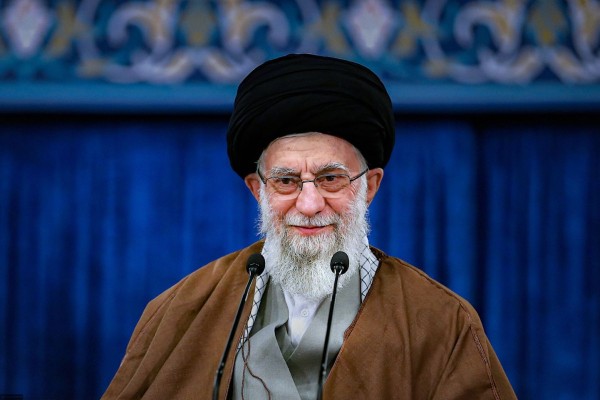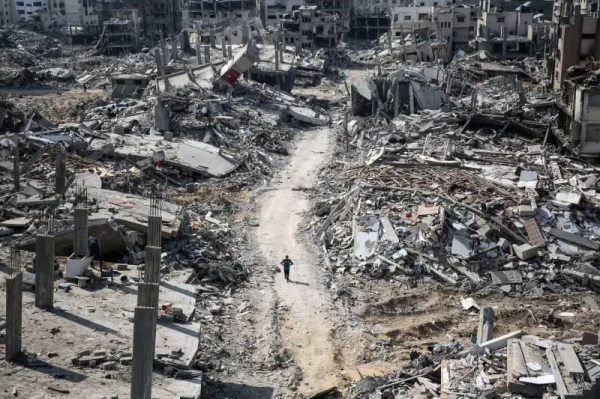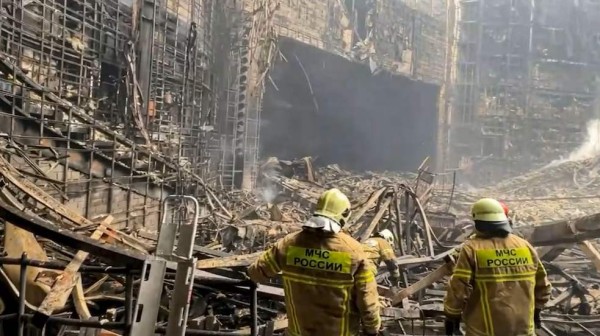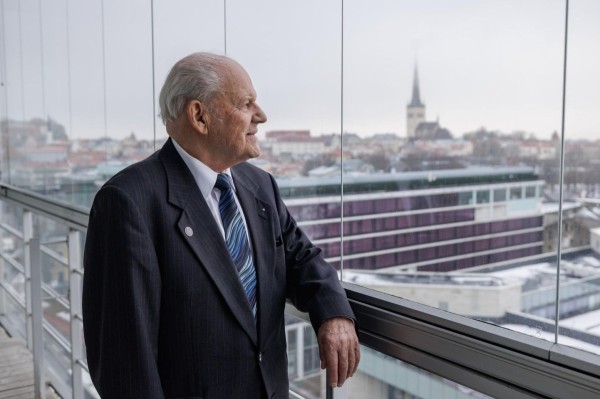Maksym Bugriy RKK/ICDS, 27 January 2015
A devastating shelling of the outskirts of Mariupol from separatist-controlled territory that led to mass civilian casualties on 24 January, raises the question of the use of Multiple Rocket Launcher Systems (MRLS) against Ukraine by Russian-led insurgents and probably by the Russian regular military. The use of such powerful artillery by pro-Russian insurgents in the conflict in Ukraine’s east is largely similar to the tactics of Hezbollah and Hamas against Israel.
Interestingly, observers from the Russian influential Vedomosti business daily assessed the International community’s reaction to the Mariupol tragedy and issued a worrisome warning, “Russia risks to be viewed by the international community as one of the main sponsors of terrorism”. Furthermore, according to the testimony of a separatist artillery observer, detained by the Ukrainian Security Service (SBU), it was probably regular Russian military that had carried out the Mariupol barrage.
On the diplomatic front, shortly before the Mariupol tragedy, the parties to the Minsk process had agreed on the withdrawal of heavy artillery systems (exceeding the calibre of 100 mm) from the line of fire. Among others, the Minsk Protocol listed the following powerful Multiple Rocket Launch Systems:
- 9K51 Grad
- 9K 57 Uragan
- 9K58 Smerch
- Tornado G, U and S modifications.
The first in the rising order of firepower among these systems and the most known is the Grad (literally means: “hail“).
According to the IISS Military Balance 2014 , the Russian Army has 800 Grad BM systems in service and 1,700 in storage. The Russian Naval Infantry (Marines) have 36 Grad BM 21 systems in service. On addition, there are 200 Uragan 220 mm MRLS and 10-6 Smerch 300 mm MRLS in service and 700 Uragan systems in storage in the Russian Army. According to the same source, Ukraine has 200 BM 21 Grads, 70 Uragan, and 80 Smerch systems in use in the Army, while the Naval Infantry uses 18 BM 21 systems.
One of the first mentions of pro-Russian separatists possessing Grad BM 21 was on 9 May 2014 – the insurgents allegedly seized two Ukrainian systems near Slovyansk. Remarkably, the Ukrainian military and bloggers denied this report as fake news. While at the same time, the separatists were accusing the Ukrainian military of deploying MRLS against the insurgents. Such an information war likely served as a cover-up for the cross-border supply of stored MLRS from Russia to the rebels.
By mid-November 2014, the number of self-propelled artillery and MRL systems used by the separatists was 400–500, according to Dr. Philip Karber, President of the Potomac Foundation. While such systems were also likely available for use by the Russian forces deployed inside Ukraine. Furthermore, there were 800+ artillery and Multiple Rocket Launchers held by Russian forces near the border of Ukraine. Dr. Karber especially noted in his analysis “the Russian forward deployment of heavy artillery and their most modern fire support into the Donbas since the beginning of the Ceasefire...”.
Quite remarkably, the use of MLRS was typical for some of the 20th and early 21st century armed conflicts in the Middle East, where such systems were extensively used first by Egypt and than Hezbollah and Hamas against Israel.
In his book “Field Artillery and Firepower“ Jonathan A. Bailey wrote, “Since the mid 1970s, Israel’s Arab enemies have honed artillery as a weapon of psychological warfare“(p.395). Especially remarkable was the “phony war of psychological attrition...across the Suez Canal between July 1967 and October 1973, in which artillery was the primary weapon“ (page 397).
Another feature of the use of MLR systems is in its ability to provoke the adversary to apply similar tactics of massive artillery strikes hitting heavily populated areas. The Ukrainian-Russian conflict has recorded numerous examples of the rebels firing from urban neighbourhoods using the population as a “human shield”. Remarkably, the Russian Foreign Minister Sergei Lavrov was quick to blame President Poroshenko for shelling towns with heavy weapons in an attempt to claim that the militias actions were defensive ones.
While there are similarities between Russian-led separatists and Hezbollah and Hamas tactics in employing the intimidating use of MLRS and the use of the population as human shields, the biggest difference in the Israeli and Ukrainian contexts is in terms of the ability to defend and respond to such MRLS attacks. Unlike Ukraine, Israel has the technological capability and political will to locate and destroy MRL systems and it also enjoys air supremacy.
One known example is the use of the sophisticated Iron Dome missile defence system, which would probably be unable to counter a Grad BM-21 battery launch (6 launchers x 40 launch tubes). Also importantly, Hamas and Hezbollah lack the air defence capability to defend against Israeli air strikes. While Ukraine currently lacks reconnaissance-strike capability, thus allowing the Russians to employ essentially WWII-era artillery tactics, where “Katyusha” MLR systems were used successfully to deliver concentrated fire.
Currently, Ukraine seems to have received only three of 20 counter-battery radar systems as part of the US defence aid, which likely have not yet been deployed. While widely-anticipated, further escalation of the conflict in Ukraine’s east calls for the speedy supply of the required weapons systems to Ukraine: diplomatic efforts alone cannot compensate for Ukraine’s lack of relative deterrence capacity vis-a-vis Russia.
(http://www.icds.ee/blog/articl... )
Grad as the Russian Weapon of Terror
Arvamus
TRENDING


























